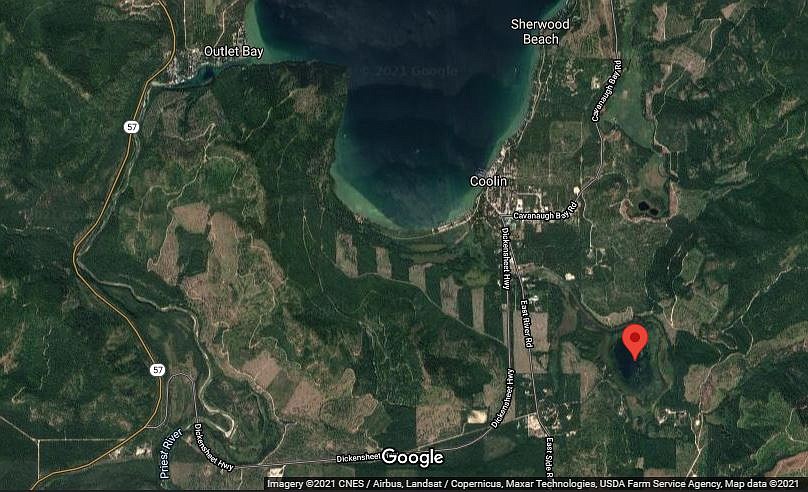Concerns raised about Coolin wetland development
SANDPOINT — Bonner County commissioners began Tuesday's meeting hearing public concerns over another minor land division in the Coolin wetlands area.
Despite the concerns, the MLD was approved by commissioners Dan McDonald and Steve Bradshaw. Commissioner Jeff Connolly was absent.
Concerned resident Preston Carter brought up that this minor land division was adjacent to another one applied by the same owner on the same day. A neighboring MLD on Warren Beach Road in Coolin was already approved this June and is facing a legal challenge, after a frustrated appeal attempt. MLD0144-21, which was brought up this week, was applied for before the ordinance was changed to prohibit contiguous minor land divisions.
Bill Wilson, county legal advisor, said he agreed with critics who claim this MLD is an effort to skirt around subdivision rules.
“One of the speakers said it looks as though this developer was trying to avoid the subdivision requirements. It doesn’t just look like it, they 100% were,” Wilson said.
However, Wilson said he advises county officials that applicants should still have the same benefits the law provided when the application was filed.
According to county code, MLDs “shall be designed around identified natural hazards” like flood plains. Carter pointed out that the entire proposed division is on a flood plain, and thus cannot be put “around” one.
Amy Anderson, director of the Selkirk Conservation Alliance, briefly mentioned several issues with minor land division, but ended by referencing the ongoing litigation over the adjacent project, which commissioners also approved and sustained following an appeal.
Jennifer Ekstrom of the Idaho Conservation League echoed several of the earlier points. With regards to contiguous MLDs, Ekstrom said Bonner County Code makes it “unlawful to attempt to avoid this article … by using a series of owners or conveyances or by any other method that ultimately results in … a subdivision or the sale of subdivided land.” This part of the code, according to amlegal.com, was last amended Aug. 4, 2021 – five days before the application was received.
Ekstrom also mentioned that the application should have been approved or denied within the original 30-day window to approve or deny it.. That window ended in Sept. 2021.
Robert Bond, whose family owns an adjacent property, also questioned the proposal, citing the amount of fill that needed for potential development and the damage it would cause to both the wetland and quality of water in that part of Priest Lake. Bond questioned the transparency of the process, and said the site’s ecological diversity is worth protecting.
“There are certain properties that just shouldn’t be developed.”
McDonald frequently reminded the audience that MLDs are just “invisible lines” and not actual development.
Janice Houtton told commissioners to “wake up and start being smart” about wetland development, saying she watched the destruction of Lake Coeur d’Alene before moving to Priest Lake. She said the state is “behind” in protecting wetlands from hasty development and that the “invisible lines” applied for in an MLD are steps toward development.
“There’s developers out there that look at this place like a juicy steak they can just carve up and eat,” she said. “It’s a joke that it’s even come this far, in my opinion, that they got through that little loophole.”
John Stockton asked how it is possible to compartmentalize the property with a line, notinge “muck on muck” soil conditions could cause houses to sink and need to be jacked up in the area. The “imaginary lines” are hurdles on the path to development.
The MLD was passed with the rest of the consent agenda.

